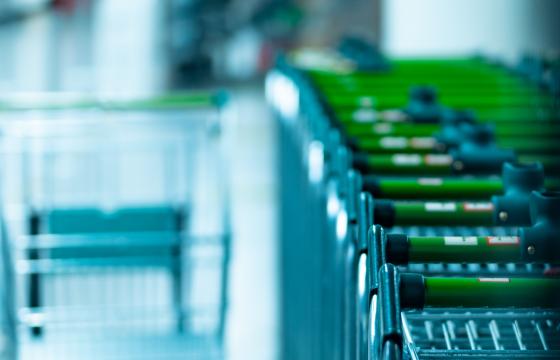
Our shopping habits have had to change over the past year, but did you know that Internet of Things (IoT) technology has been quietly improving our retail experience for years?
Whether it’s popping to the shops to grab that cheeky late night chocolate bar or a weekly grocery run planned with military precision, food shopping is one of our most regular errands. Whilst our normal shopping habits have changed in the last year due to the pandemic, our retail experiences have been steadily improving in ways that we might not have previously been aware of, thanks to the Internet of Things (IoT).
From ensuring stores are a pleasant temperature to improving the quality of refrigerated products, IoT has been quietly improving our retail experience to ensure that our shopping experience is an optimum one. Below are four ways in which our retail experiences are being improved thanks to IoT and other connected, digital technologies.
1) Fresher Food
Truthfully, how much attention do you give to your home fridge? Well, when you’re running a supermarket estate with thousands of fridges containing millions of pounds worth of stock, keeping them running smoothly becomes a priority. It’s hard to imagine, but food retailers are actually monitoring the temperature, health and efficiency of each and every refrigerator, every second of every day.
Historically, this was a less frequent and more manual process. These days, connected technology and monitoring software is capable of seamlessly collecting and managing second-by-second machine data which allows for sophisticated strategies to be put into place to improve and enhance refrigeration estates. Amongst other things, smart automation strategies are an example of this. By tracking machine performance in real-time, connected technology can automatically adjust the temperature of the refrigerators in order to best suit the specific produce inside them. This keeps food fresher for longer, ensures the safety and quality of refrigerated produce and reduces the chance of spoilage and waste. By transforming refrigeration practices, food retailers can ensure produce stays fresher for much longer without compromising on quality.
2) A Better Atmosphere
Fridges aren’t the only thing that connected technology can monitor and automate. HVAC (Heating, ventilation and air conditioning) and lighting systems can also be optimised by gathering and processing data on everything from temperature and humidity to natural light and the number of people currently in an aisle. This information enables dynamic changes which allow these systems to operate at maximum efficiency, whilst creating a store atmosphere that is the perfect temperature and optimally light for all your shopping needs!
Crucially, during recent times, IoT has enabled retailers to maintain a constant air flow to create a safer environment for shoppers during the COVID-19 pandemic.
3) Keeping Your Local Store Up and Running
Machines break down and in a retail setting that’s bad news for frozen or refrigerated food, customer comfort and produce availability. If a freezer breaks down in a store, the stock is either removed or (unfortunately) already ruined, meaning your favourite tub of ice cream could be unavailable right when you need it most.
IoT allows for real-time monitoring of machines to track their health and performance and detect when they show signs of failure. Catching problems early means that these machines can often be fixed before they get to a point where they affect internal store temperatures or ruin food produce. Poorly maintained fridges and freezers can lead to icy build ups, leaks or overstocked units. We’ve all had to make the tough decision between the solid, iced-up pizza box or the soggy one! Put another way, this early warning system means machines rarely fail to the point where the customer will notice a difference to their experience, making the weekly grocery shop as smooth and as fruitful as possible.
4) Clearer and Cleaner Roads
Although not technically an in-store benefit, IoT solutions deployed in supermarkets actually have a surprisingly large effect on the volume of traffic and pollution on our roads. By enabling engineers to view machine data and device status in real-time from anywhere – another job, their vans or even from their own homes – maintenance professionals are able to detect, diagnose and even in some cases fix machine faults remotely. This means that there are far fewer engineer callouts, as most preliminary maintenance work for an instore asset, such as a fridge or lighting system, can be done without needing to be physically present to inspect the machine. This in turn means fewer engineers needing to travel, fewer vans on the road and ultimately less traffic and pollution as roles are carried out remotely.
Whilst most of these technologies are invisible to the consumer eye, their importance to our shopping trip cannot be overstated. Technologies that can provide insights and improved efficiencies allow retailers to save money on energy, stock loss and maintenance – savings that they can then pass on to their customers. When we look at this impact on a wider scale, the efficiencies that these IoT enabled stores are driving have a significant impact on global sustainability and waste, something we can all appreciate the value of. COVID may have temporarily changed our shopping experience, but technology has the potential to continue to transform it for the better.